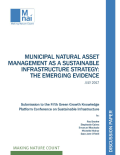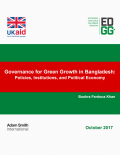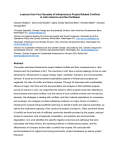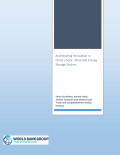
This paper documents an emerging strategy to manage natural assets such as woodlands, wetlands, and creeks in urban areas as part of a sustainable infrastructure strategy. Specifically, the paper explores Canadian local government experience through the Municipal Natural Assets Initiative (MNAI) to identify, value, and account for natural assets’ contribution to municipal government service delivery, services that would otherwise need to be delivered by engineered assets. Evidence from MNAI suggests that a structured, asset management-based approach holds great promise to tackle the twin challenges of declining urban infrastructure quality and declining ecosystem health and could have applicability well beyond Canada.




The report "Incorporating Climate and Ocean Change into an Ecosystem Approach to Fisheries Management (EAFM) Plan" explains how the potential impacts of climate and ocean change can be integrated into ecosystem-based approaches to fisheries management.
The report's target audience is governments and organizations creating such management plans in the Coral Triangle region. This region is expected to experience increases in sea-surface temperatures and rainfall. It lists steps that governments and organizations can take to create a fisheries management plan that takes an ecosystem-based approach. This would start with a climate vulnerability assessment. Steps include defining the scope of the fisheries management unit; identifying and prioritizing issues and goals; developing the plan and implementing it; and monitoring, evaluating progress and adapting where needed.
